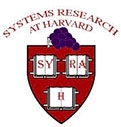7.4 Corruption and Versioning
An insipid fact of running a large system where users can choose when to upgrade is that not everyone is running the same version. One of the problems we found with our original deployments was that about 13 percent of the remote coordinates received during gossip were at the origin; that is, ![]() . After much discussion (Is that incredible churn rate possible? Do nodes behind firewalls never update their coordinates?), we realized that this problem was due to a portion of the network running an old code version. In fact, during one crawl of the Azureus network, we found only about 44 percent of the approximately 9000 clients crawled were using the current version. While not very exciting, realizing this fact allowed us to compensate for it both in the coordinate update process and in active statistics collection through the explicit handling of different versions within the code.
. After much discussion (Is that incredible churn rate possible? Do nodes behind firewalls never update their coordinates?), we realized that this problem was due to a portion of the network running an old code version. In fact, during one crawl of the Azureus network, we found only about 44 percent of the approximately 9000 clients crawled were using the current version. While not very exciting, realizing this fact allowed us to compensate for it both in the coordinate update process and in active statistics collection through the explicit handling of different versions within the code.
Kaafar et al. have begun investigating the more interesting side of the problem of coordinate corruption: malicious behavior [16]. They divide attacks into four classes: disorder, isolation, free-riding, and landmark control. While we did not see any evidence of intentionally corrupt messages, it would be trivial to install a client, or a set of clients, that responded with random values, for example (just as the MPAA runs clients with spurious content advertisements to squelch piracy). As Internet-scale coordinate systems come into wider use, they will need to grapple with both oblivious and malicious corruption.
Jonathan Ledlie 2007-02-23